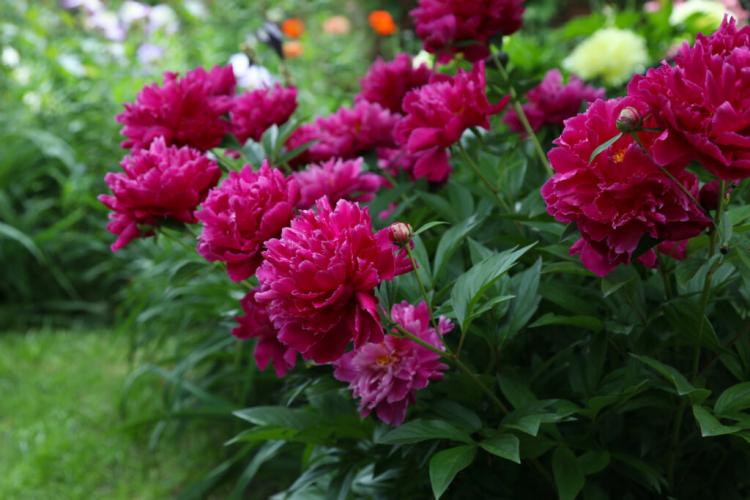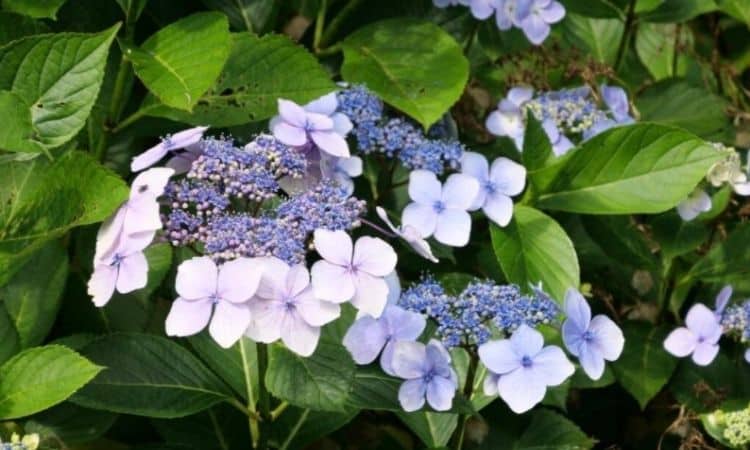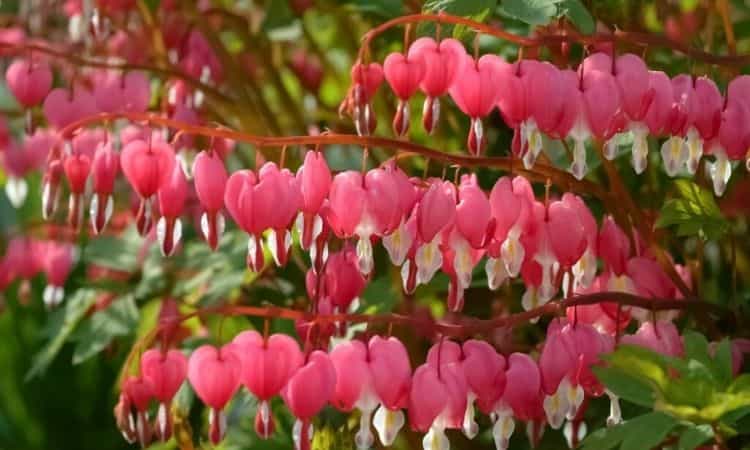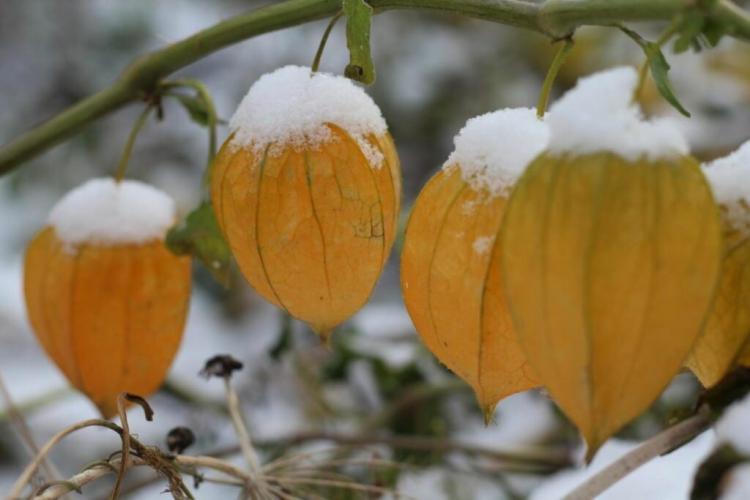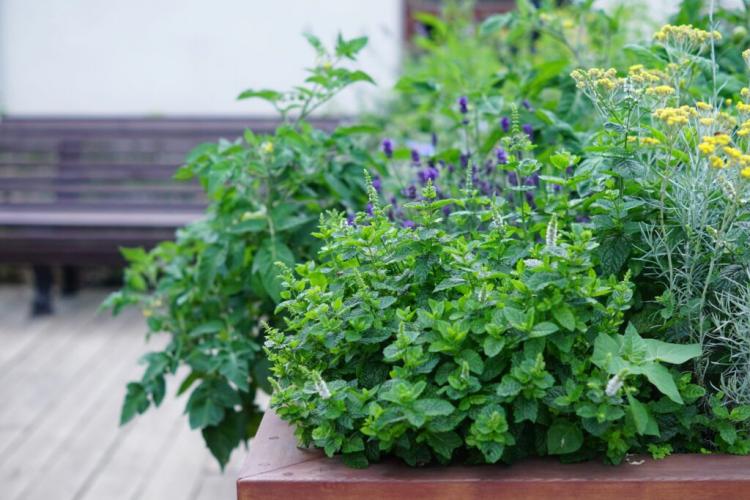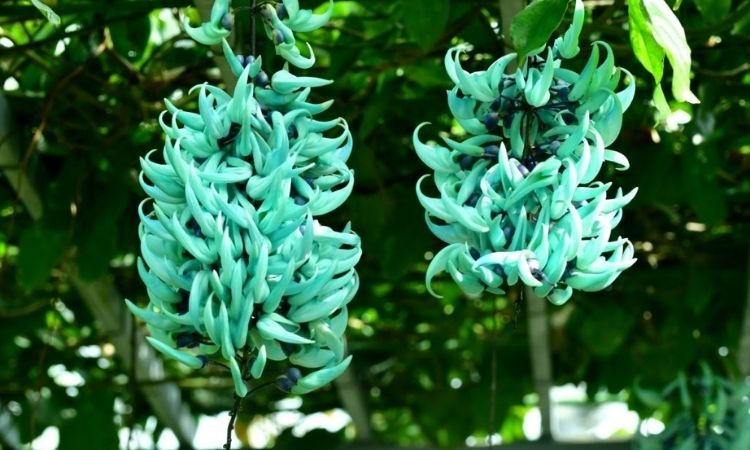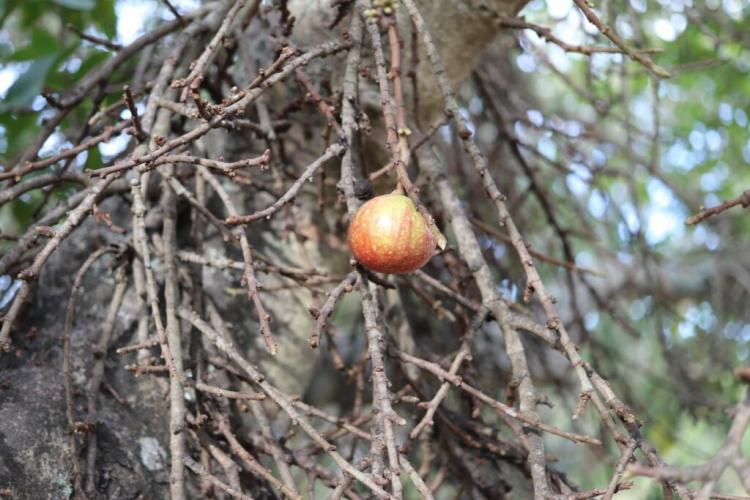Gardening In May: Everything At A Glance!
Shortly before summer really starts, it is important to prepare the garden for the great heat. In our overview, we show which gardening work is due in May and what can now be planted or harvested.
In May things will finally get going in the garden! It is not for nothing that it is said: “Everything is new in May”. Much can now be sown and replanted. Some things are already ripe and ready for harvest. So there is enough to do. In this article, we have summarized for you the gardening work to be done in May.
The ice saints
Table of Contents
While the list of things to do in the garden in May is long, it is better not to rush things. Because the famous ice saints fall in the merry month. Although the days in May are often warm and sunny, the summer weather can hide the fact that night frosts are still possible in May. Night and ground frost destroys plants that are sensitive to the cold and can ruin the planning of even the most experienced gardener.
That is why it is often said to wait until after the Ice Saints before sowing and planting plants. These mark a turning point in the gardening year. You can only be really sure that there will be no more frost after the “Cold Sophie”, the last of the ice saints on May 15th. After that, almost anything can be grown in the garden to your heart’s content.
May sowing and planting: what is sown now?
As soon as there is no more frost to be expected in the garden, plants grown on the windowsill can be moved outside and vegetables can also be sown directly in the bed.
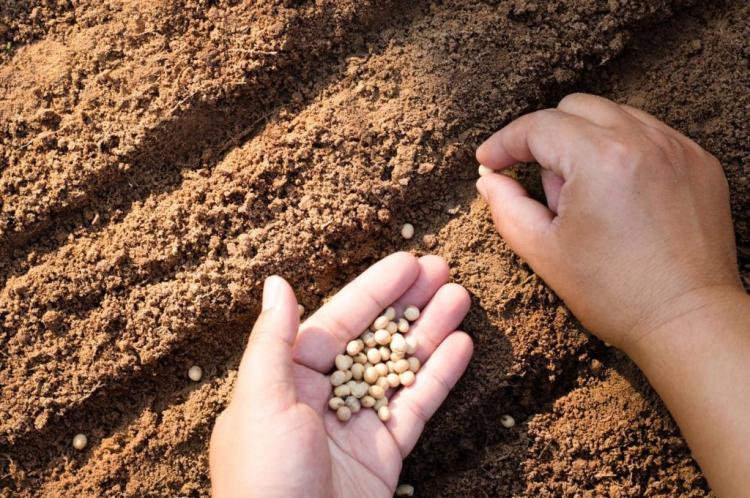
Peas, beans, beetroot and carrots are just a few of the many vegetables that are sown outdoors in May
The following vegetables are sown and planted in May:
- Sowing on the window sill: broccoli (Brassica oleracea var italica.), Cauliflower (Brassica oleracea var botrytis.), Kale (Brassica oleracea var sabellica.), Kohlrabi (Brassica oleracea var Gongylodes.), Pumpkin (Cucurbita), Brussels sprouts (Brassica oleracea var. gemmifera), cabbage (Brassica oleracea convar. capitata var. alba), zucchini (Cucurbita pepo subsp. pepo convar. giromontiina), sweetcorn (Zea mays).
- Sow directly in the field: French and runner beans ( Phaseolus vulgaris ), peas ( Pisum sativum ), pumpkin, Swiss chard ( Beta vulgaris subsp. Vulgaris ), beetroot ( Beta vulgaris subsp. Vulgaris var. Conditiva ), carrots ( Daucus carota subsp. sativus ), sweet corn, parsnip ( Pastinaca sativa ), onion ( Allium cepa ), chicory ( Cichorium intybus var.foliosum ), nasturtium ( Tropaeolum ).
- Plant preferred plants outdoors: Cucumber ( Cucumis sativus ), kohlrabi, pumpkin, peppers ( Capsicum ), tomatoes ( Solanum lycopersicum ), celery ( Apium graveolens ), cabbage, artichokes ( Cynara cardunculus var. Scolymus ), eggplant ( Solanum melongena ), Zucchini, basil ( Ocimum basilicum ).
Of course, not only do vegetables grow and thrive well in the garden in May, now is also the time to sow lots of beautiful summer flowers or plant bulbs.
You can sow and plant the following flowers outdoors in May:
- Flowers and tubers: Dahlias (Dahlia), gladiolus (Gladiolus), freesia (Freesia), Buttercup (Ranunculus), Day lily (Hemerocallis) or tuberous begonias (Begonia).
- Summer flowers: Tagetes ( Tagetes ), asters ( Aster ), chrysanthemums ( Chrysanthemum ), hour flower (Hibiscus trionum ), marigold ( Calendula officinalis ), poppy ( Papaver ), morning glory ( Ipomoea ), cornflower ( Cyanus segetum ), snapdragon ( Antirrhinum ), Lupins ( Lupinus ), sunflower ( Helianthus ), Columbine ( Aquilegia ).

Begonia bulbs are planted in May
Harvest in May: what is ripe now?
Much can be harvested from your own garden in May.
The following vegetables and fruits are in season in May:
- Harvest in the bed: Leeks ( Allium porrum ), radishes ( Raphanus sativus var. Sativus ), spinach ( Spinacia oleracea ), asparagus ( Asparagus officinalis ), sugar snap peas ( Pisum sativum ), spring onions ( Allium fistulosum ), turnips ( Brassica rapa subsp. Rapa var. majalis ), lettuce ( Lactuca sativa var. crispa ), rhubarb ( Rheum rhabarbarum ), strawberries ( Fragaria ), elder flowers ( Sambucus ).
- Fresh herbs: Chives ( Allium schoenoprasum ), wild garlic ( Allium ursinum ), parsley ( Petroselinum crispum ssp. Crispum ), borage ( Borago officinalis ), dill ( Anethum graveolens ), chervil ( Anthriscus ), lemon balm ( Melissa officinalis ).
- From the greenhouse or polytunnel : Chinese cabbage ( Brassica rapa subsp. Pekinensis ), kohlrabi, Swiss chard, rocket, lettuce, fennel ( Foeniculum vulgare ).
If you would like to find out more about which fruits and vegetables grow when, we recommend that you take a look at our seasonal calendar.

The delicious strawberries can be harvested in May
These plants bloom in May
In May it is already green and blooming everywhere. Not only does the magnificent peony open its flowers this month, many trees and shrubs are also in bloom now.
These flowers, fruit trees and shrubs bloom in May:
- Some flowers in May: Peonies ( Paeonia ), bleeding heart ( Lamprocapnos spectabilis ), lungwort ( Pulmonaria ), forget-me-not ( Myosotis ), cranesbill ( Geranium ), wood anemone (Anemone nemorosa ), hornbill ( Viola cornuta ).
- Flowering fruit trees in May: plum ( Prunus domestica ), sour cherry ( Prunus cerasifera ), sweet cherry ( Prunus avium ), mulberry tree ( Morus ), orange ( Citrus x sinensis ), lemon ( Citrus x limon ), Nashi pear ( Pyrus pyrifolia ), Mirabelle plum ( Prunus domestica subsp.syriaca ), apple ( Malus domestica ), pear ( Pyrus communis ), kiwi ( Actinidia ), Indian banana (Asimina triloba ), quince ( Cydonia oblonga ), rock pear ( Amelanchier ).
- Trees in bloom in May: maple ( Acer ), blue spruce ( Abies procera ), hemp palm ( Trachycarpus fortunei ), mountain ash ( Sorbus aucuparia ), walnut tree ( Juglans ), almond tree ( Prunus dulcis ), ash ( Fraxinus ), beech ( Fagus sylvatica) ), Spruce ( Picea ), juniper ( Juniperus ), cherry laurel ( Prunus laurocerasus ), black locust ( Robinia ), magnolia ( Magnolia ), Japanese cherry ( Prunus serrulata ).
Tend fruit trees and berry bushes in May
Even if the time for the large pruning in May is already over, there are still some maintenance measures for fruit trees and bushes.

Some pruning work is also required on fruit trees and berry bushes in May
What is the pruning and maintenance work to be done on fruit trees and berry bushes?
- Tie down side shoots on young fruit trees
- Cut back side shoots in espalier fruit
- Shorten new shoots on kiwi trees
- Thin out the plums
- Fertilize raspberries ( Rubus idaeus )
- Mulching berry bushes
- Mulching strawberries
Lawn maintenance in May
A healthy, green lawn is a must for many in the garden. In order for the lawn to remain vital, particular importance should be attached to lawn care in May. Especially in May, when the temperatures rise significantly and it is sufficiently humid, the growth of the lawn is particularly vigorous and the foundation stone is laid for a dense area of grass throughout the year.
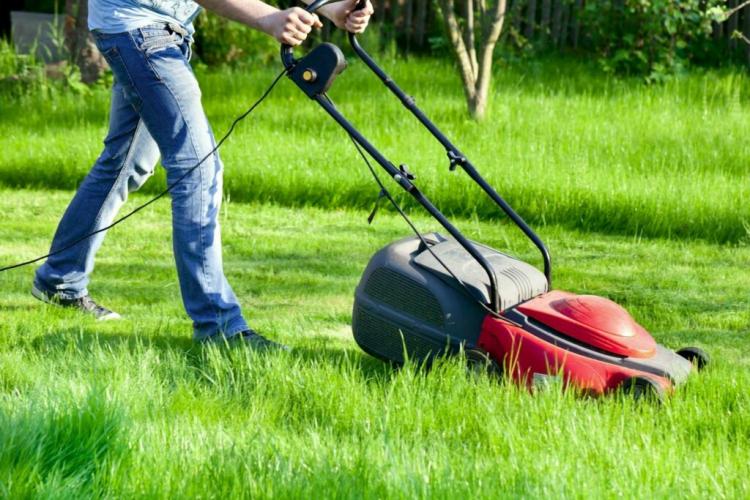
Mowing should take place regularly in May
- Re-sow the lawn: Over the winter, frost repeatedly results in thinner areas or bare spots in the lawn. To get a more even picture, it is worth re-sowing the lawn in May. In particular, lawn seeds with the fast-germinating lawn type Lolium perenne , as contained in our Plantura lawn reseeding, ensure that the thin lawns are filled up quickly. The warm temperatures in May ensure good growth of the lawn seeds and thus help to close the thinned areas quickly.
- Mow the lawn: In May the lawn often gets a growth spurt. Regular mowing of the lawn is the order of the day so that it doesn’t get out of hand. You can find out which cutting height you should aim for depending on the type of lawn in our special article on lawn mowing. As a rule of thumb, however, it applies to every lawn that never more than 1/3 – a maximum of half of the stalks – may be shortened. The speed of growth of the lawn thus determines the frequency of the cuts.
Pests and beneficial insects in May
In May there is already a lot of crawling and crawling in the garden. That is why there is now a lot to be done to encourage beneficial insects and to put pests in their place.
Which pests and beneficial insects do I have to watch out for in May?
- Promote ladybirds against aphids
- Keep cherry fruit flies away with yellow bars
- Protect cabbage plants against pests with nets
- Check young vegetables for caterpillars
- Plant chervil as protection against snails

You can actively promote ladybugs as beneficial insects in May
Note : The voracious box tree moth is also active in May and can cause great damage to box trees. Here we show you how to recognize a moth infestation. To combat the boxwood moth, biological pesticides such as our moth-free XenTari are particularly suitable. This is not dangerous for bees, but works effectively against the caterpillars of the box tree moth. In this article you will find out how to use the remedy and combat the boxwood moth biologically.
More gardening work in May
Hardening young plants: In order to make it easier for pre-grown young plants to move from the windowsill to the open air, they can be hardened. Otherwise the shock is too great for the young plants to suddenly cope with solar radiation, wind and changing temperatures. To do this, you put the plants outside on the terrace or in the garden during the day and bring them back inside overnight. After a few days, the plants are ready to move permanently into the field.
Chop vegetable patches regularly: If one or two vegetables are already growing in the patch, you can chop them regularly. This has several advantages: By hoeing, unwanted weeds are removed, the soil is loosened and can thus absorb water better. In addition, regular chopping stimulates the mineralization in the soil and nutrients are made more easily available to the plant.
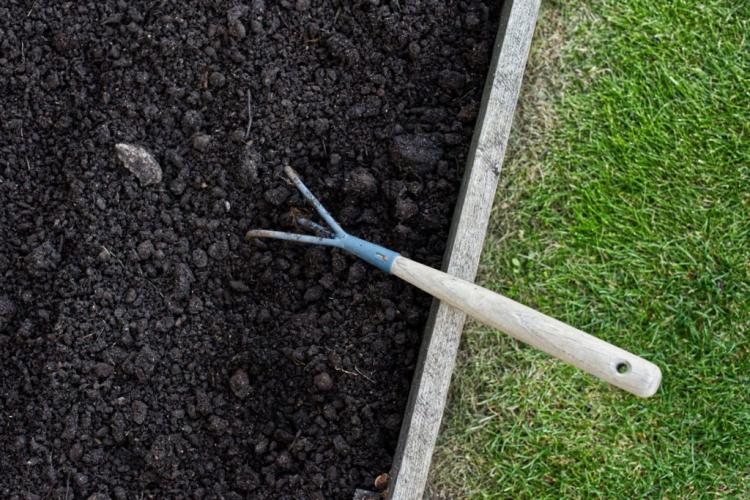
Regular chopping in the vegetable patch has many advantages
Mulching: Mulching is a popular practice in permaculture. Here, organic material is placed on the bed or under bushes and shrubs. This protects the soil from drying out, suppresses weeds and also supplies the plants with nutrients from the organic material.
Mulching: Mulching is a popular practice in permaculture. Here, organic material is distributed on beds or under bushes and shrubs. This protects the soil from drying out, suppresses weeds and also supplies the plants with nutrients from the organic material. A mulch layer made of pine bark, for example our natural Plantura organic pine bark, combines the advantages of mulching with an extremely decorative look.
Thinning row crops: If vegetables were sown in rows directly in the bed before May, now may be time to thin them out. Carrots, radishes or parsnips have to be thinned out so that the individual plants have enough space to develop properly.
Moving the compost: May is a good time to move the compost. As soon as the temperatures rise again in spring and it gets warmer, the microorganisms also start working again after the winter rest. The rotting processes in the compost are faster. The ripe compost can be used to create new beds or to fertilize plants with high nutrient requirements.
Fertilizing young plants: Speaking of fertilizing: young plants that have already been sown or planted can tolerate fertilization in May. This helps the plants to grow and ensures you a rich harvest. Our Plantura fertilizers are the ideal companion for you in the garden, because they are sustainable and environmentally friendly.
Put the potted plants outside after the ice saints: If frosts are no longer to be expected, your potted plants can also move from their winter quarters to the garden.
Creating a flower meadow: If you have been thinking about creating a flower meadow in your garden for a long time, May is the best time to do so. To do this, the selected area is dug up and finely raked. Then spread the flower meadow seeds over the area and keep them moist until the seeds germinate. The Plantura beneficial insect magnet is ideal for this, for example. Soon you can look forward to a colorful display of flowers and a real magnet for insects and beneficial organisms.
Balcony plants for May
The balcony season finally starts again in May. But that doesn’t just mean that in May you can finally enjoy the days on your balcony again – instead, plants, which give the balcony its charm, also need special attention in May. Only in this way can their beauty be preserved and the balcony is transformed into a little piece of paradise in May.
Blossom miracle in May: In May you can finally look forward to boxes full of colorful balcony flowers: In addition to classics such as geraniums ( pelargoniums ), petunias ( Petunia ) and hard-working lizards (Impatiens walleriana), ash flowers (Pericallis hybrids), scented stone oak (Lobularia ) are also presented maritima ) and magic bells ( Calibrachoa ).
From the balcony: gladiolus (Gladiolus), dahlias (Dahlia) and other bulb flowers, which bloom in the summer to spend the winter often in the house to escape the frigid cold. From mid-May, however, the balcony flowers can slowly move back to their traditional place on the balcony.
Create a snack garden: It’s not just flowers that deserve a place on the balcony – balcony strawberries ( Fragaria ) are also a great asset. Everbearing strawberry varieties with hanging growth not only invite you to snack in between meals, but are also often particularly decorative.
